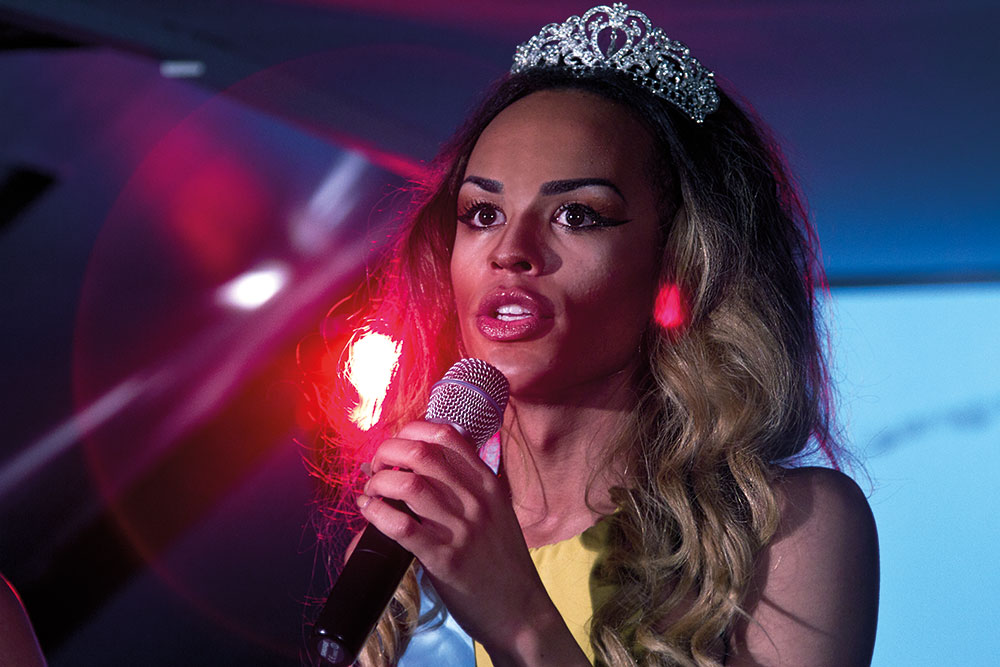
After more than 35 years of operation, TBI is closing its doors and our website will no longer be updated daily. Thank you for all of your support.
Trans on TV
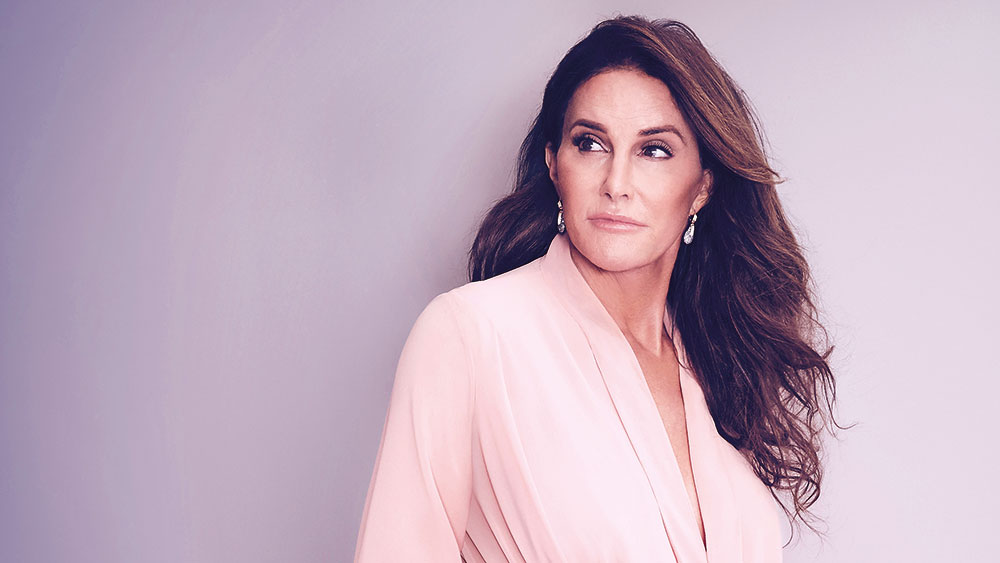 When cultural historians look back, 2015/16 will undoubtedly be seen as a landmark in terms of the way transgender people are portrayed on TV and viewed by mainstream society, reports Andy Fry
When cultural historians look back, 2015/16 will undoubtedly be seen as a landmark in terms of the way transgender people are portrayed on TV and viewed by mainstream society, reports Andy Fry
Reality TV star Bruce Jenner’s transition to Caitlyn Jenner is undoubtedly the most high-profile transgender story, having been introduced on US network ABC’s news magazine 20/20 in April 2015 and then explored further in E! Entertainment’s eight-part reality series I Am Cait (top, now recommissioned). The subject has also been addressed in numerous other shows. Among scripted series, standout examples include Transparent, Orange is the New Black, Grey’s Anatomy, The Fosters and Boy Meets Girl. In unscripted, there has been a steady stream of character-based films that study the issue from a range of angles. Not to be overlooked is the contribution from feature films, with Eddie Redmayne’s performance in The Danish Girl and Sean Baker’s micro-budget movie about trans sex workers, Tangerine, also stirring debate.
Jes Wilkins, chief creative office at indie producer Firecracker Films, believes the positive portrayal of transgender people has been “one of the most incredible stories of the last couple of years, and the TV business has been directly involved”.
“The way the industry has tackled preconceptions about the transgender community and the discrimination it faces has arguably helped drive the biggest and fastest change in social attitudes ever,” he says.
Firecracker’s engagement with the issue came when it was commissioned to make a series of three films for UK broadcaster Channel 4 UK’s ‘Born in the Wrong Body Season’, entitled Girls to Men, My Transgender Kid and My Transgender Summer Camp. “I think that before the current wave of shows the community was very misunderstood, and there was a kind of freak-show element to the way it was depicted,” Wilkins says. “But that has definitely changed. I remember escorting one of the families from Girls To Men to an interview on a leading daytime chat show in the UK and thinking ‘it doesn’t get much more mainstream than this’.”
Wilkins doesn’t attribute the entire change in attitudes to TV, also pointing to the role of social media “in helping trans people find support from each other”, adding: “The fact that they could share experiences has helped the movement gain momentum.”
“One of our characters in Girls to Men posted the story of his transition on Buzzfeed and it was watched 4.5 million times in two days,” says Wilkins. “It was an extraordinary thing to be part of that expression of interest.”
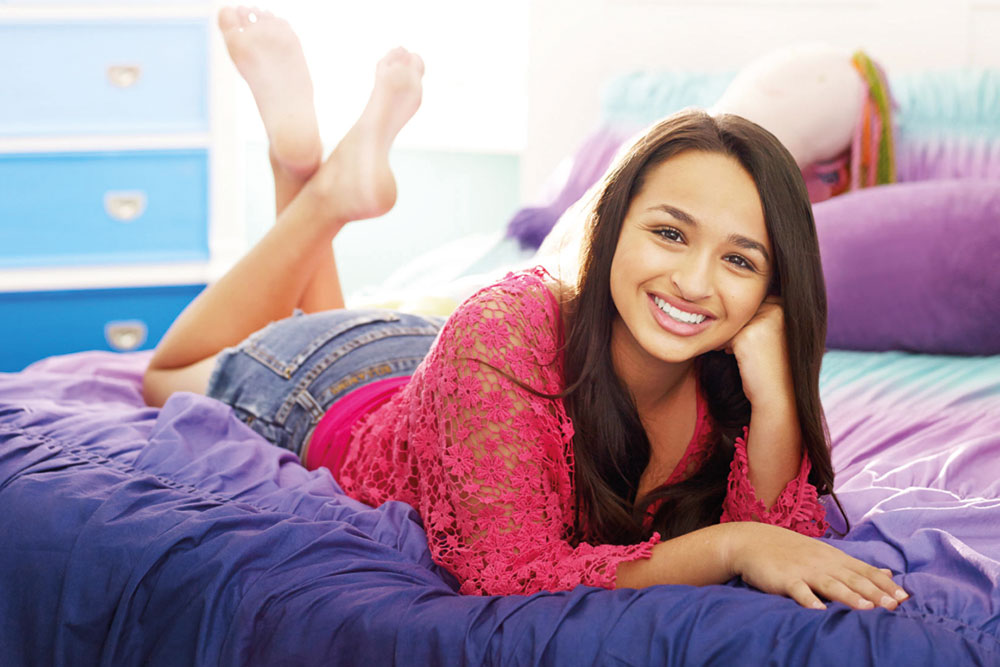 The interaction between internet and TV is also evident in the case of Jazz Jennings, a transgender teenager who has established herself as both a YouTube personality and a reality TV star, fronting the TLC show I Am Jazz (above). Critics have responded favourably to the show (also recently recommissioned), arguing that it has approached the subject with more sensitivity than you might expect from the channel that brought the world Dance Moms.
The interaction between internet and TV is also evident in the case of Jazz Jennings, a transgender teenager who has established herself as both a YouTube personality and a reality TV star, fronting the TLC show I Am Jazz (above). Critics have responded favourably to the show (also recently recommissioned), arguing that it has approached the subject with more sensitivity than you might expect from the channel that brought the world Dance Moms.
Zodiak Rights CEO Tim Mutimer says his company’s programme catalogue has a number of shows that tackle transgender themes. These include Sam and Evan: Girls to Men, My Dad is Pregnant and Sex Change Soldier. The latter, says Mutimer, “told the compelling story of Captain Hamilton, a paratrooper who turned notions of manhood and machismo on their head when he became the first officer and the first paratrooper in the history of the British Armed Forces to undergo a sex-change operation”.
At MIPTV, Zodiak will have new properties. “We’ll be launching Miss Transgender UK (below), from Minnow Films for BBC Three, which follows contestants battling it out to be crowned the UK’s first Miss Transgender,” says Mutimer. “This show is about people who are fed up with living in the shadows and determined to take centre stage. It follows three contestants on extraordinary personal journeys, exploring what it’s like to be young and transgender.”
Also from Minnow is Sex Diaries – Trans Lovers, which is part of a 3x60mins series, for Channel 4, called Sex Diaries. “Within this episode, BAFTA and Emmy award winner Charlie Russell meets men who have fallen in love with male-to-female transsexuals. It’s an intimate study that explores the transgender relationships, and the ramifications for the couples, families and friends.”
Like Wilkins, Mutimer argues that “the focus and tone of transgender-based programming is now much less about provoking shock, but more about helping inquisitive viewers learn and understand the real issues that transgender people face”.
In terms of the sales potential of such shows, Mutimer says Sex Diaries has sold into New Zealand, the Netherlands, Israel, Finland, Denmark, Australia and Poland, “and the episode ‘Trans Lovers’ proved how topical transgender programming is, as it received the most UK press attention in the three-part series. Originally, the more culturally open and tolerant territories were the only ones where broadcasters were taking transgender shows, but now we find that the market is opening up as interest is growing on the subject”.
Beyond Distribution general manager Michael Murphy has also divined a new seriousness in the way the subject is tackled. “We picked up a film from Mad Hive Media called Transforming Gender that first aired on CBC in Canada,” he says. “That was about the struggle the community faces and addressed some difficult issues, such as the fact that 40% have attempted suicide at some time.”
Murphy says his company picked up the show because “we saw this as a serious, topical issue – not reality TV. It’s the first great civil rights struggle of the 21st century. What we liked was the way the film was based around transgender people telling their stories in their own voices – it was a very honest, insightful account. It also has the kind of quality that will keep it relevant for years”.
In terms of sales, Murphy tells a similar story to Mutimer, which is that “there is interest from a growing number of countries. I think we have to accept that certain territories won’t go near subjects around sexual identity, but we licensed this film to Discovery Networks Latin America, Sky Italia, Spiegel TV in Germany, DR in Denmark, SBS Discovery in Finland, Multicanal Iberia and Radio TV in Hong Kong.”
Others to have taken the transgender agenda to heart include Sky Vision, which distributes Peacock Alley Entertainment’s Brave New Girls, a show follows the life of a transgender beauty queen; and Swedish public broadcaster SVT, whose commercial arm, SVT International, has a couple of moving and insightful films on its slate, according to head of business development Paulette Rosas Hott.
In one, Becoming Ann-Christine, the story focuses on a 57-year-old male priest who makes the brave decision to become a woman, having been trapped in the wrong body all her life. In another, Just a Normal Person, the subject is a female twin, Sam, who transitions to a man after making the same realisation at a young age. “It’s a sensitively-produced film about everyone’s right to be who they really are,” says Rosas Hott.
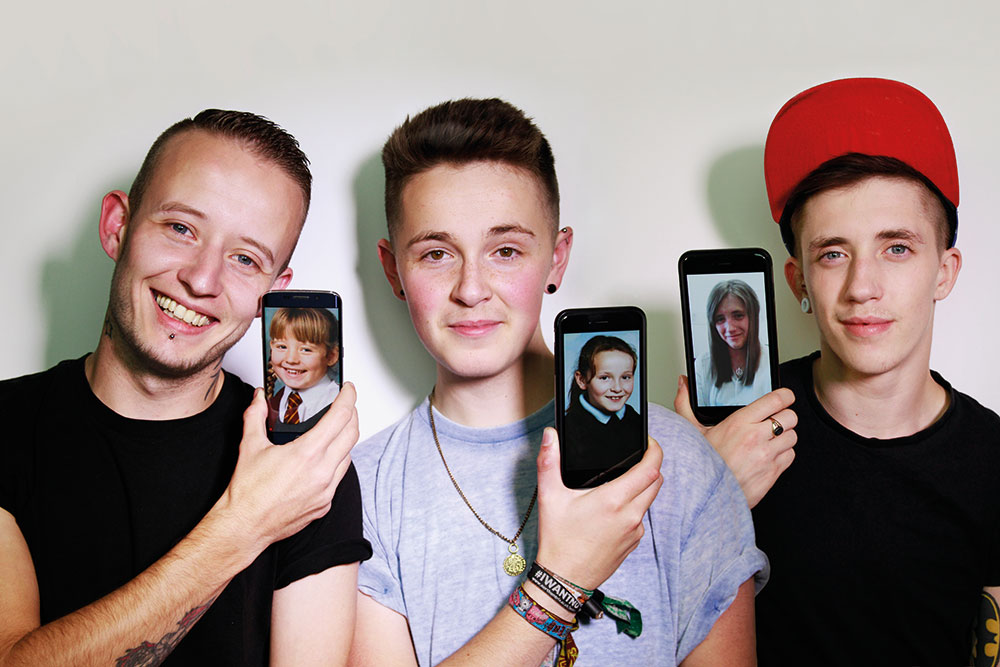 The fact that films like Girls to Men (above) and Just a Normal Person tackle female-to-male transition is an important point in itself. The TV business has tended to focus on exotic, sexualised images of transgender girls, whereas the new wave of shows is taking a more thoughtful look at the issue. “If you asked me which areas need more attention, then I’d say female-to-male transition is one of them,” says Ray Bradford, director of entertainment media at GLAAD, an organisation that monitors and advises the US industry on the way it portrays and represents the LGBT community. “For years they’ve been mostly invisible. That said, I’m pleased to say MTV’s Faking is about to introduce a transgender male played by a transgender actor [Elliot Fletcher].”
The fact that films like Girls to Men (above) and Just a Normal Person tackle female-to-male transition is an important point in itself. The TV business has tended to focus on exotic, sexualised images of transgender girls, whereas the new wave of shows is taking a more thoughtful look at the issue. “If you asked me which areas need more attention, then I’d say female-to-male transition is one of them,” says Ray Bradford, director of entertainment media at GLAAD, an organisation that monitors and advises the US industry on the way it portrays and represents the LGBT community. “For years they’ve been mostly invisible. That said, I’m pleased to say MTV’s Faking is about to introduce a transgender male played by a transgender actor [Elliot Fletcher].”
Ceire Clark, senior acquisitions executive at All3Media International, is another who sees a “new acceptance” emerging around themes of gender identity. “There are more positive, richly woven representations of gender and sexuality. New norms are being created through the media. Stories are played out, igniting global conversations on scales that have never been seen before, spreading from politics to fashion.”
In All3Media’s catalogue, she says, shows that challenge conventional attitudes to gender identity include Swan Film’s courageous Muslim Drag Queens, “a Channel 4 First Cut documentary narrated by Ian McKellen that gives unprecedented insight into the UK’s ‘Gaysian’ community. It’s a sensitive, provocative and liberating film focuses on the stories of three Gaysian drag queens who face the seemingly insurmountable challenge of gaining acceptance and tolerance within the wider community”.
Also on the slate is a series of shows fronted by transvestite Grayson Perry. The latest, says Clark, is “Grayson Perry: All Man, in which he spends time with men from different parts of society and produces a number of artworks inspired by the things he learns from them about the current state of masculinity”.
 In terms of scripted content, Endemol Shine International CEO Cathy Payne says one of the most important things to note is the way that the transgender debate has been addressed without undermining the core integrity or quality of shows. “Transparent (above) and Orange is the New Black are high-profile examples of that, but we’ve also enjoyed a lot of success with Boys Meets Girl, a Tiger Aspect comedy for BBC Two that has just been renewed,” says Payne. “That show is about a man who meets an older woman, who happens to be transgender [played by transgender actress Rebecca Root]. It’s a really interesting, insightful subject for a story line.”
In terms of scripted content, Endemol Shine International CEO Cathy Payne says one of the most important things to note is the way that the transgender debate has been addressed without undermining the core integrity or quality of shows. “Transparent (above) and Orange is the New Black are high-profile examples of that, but we’ve also enjoyed a lot of success with Boys Meets Girl, a Tiger Aspect comedy for BBC Two that has just been renewed,” says Payne. “That show is about a man who meets an older woman, who happens to be transgender [played by transgender actress Rebecca Root]. It’s a really interesting, insightful subject for a story line.”
ESI also has a documentary called Young Trans and Looking for Love (below), produced by Barcroft Productions for BBC Three, which tells the moving story of a couple who have both transitioned in the opposite direction. On the subject of the commercial appeal of such shows, Payne says: “The bottom line is that we’re looking for good stories and characters. We have lots of shows in our catalogue that aren’t right for some buyers or others. Buyers know their markets and can decide for themselves what works.”
That said, the recent trend for transgender-focused programming has probably peaked. However, Mutimer says it is leaving behind an important cultural legacy, which is that more and more transgender people “are being featured as contributors in shows where they are not necessarily the main focus. This makes the topic less of an issue and more an accepted part of life.”
A good current example of this point would be the UK version of The Voice, where a transgender performer, Jordan Gray, reached the semi-finals. There are also other high-profile examples. The Next Top Model franchise, for example, had its first transgender winner in the 2015 Dutch edition (Loiza Lamers), and Israel’s Channel 24 recently aired a show to find the next big female pop group, fronted by Dana International, the transgender Eurovision Song Contest winner.
In the UK, BBC soap EastEnders has also taken an important step, introducing its first transgender character, played by transgender actor Riley Carter-Millington.
EastEnders executive producer Dominic Treadwell-Collins says: “From Mark Fowler’s HIV to Colin and Barry’s first gay kiss, EastEnders has always led the way in changing perceptions about ‘difference’. In Riley we have found not just a talented actor, but also an inspirational young man.”
Millions of viewers have now also met Riley in primetime.
GLAAD on TV
Transgender has been the big talking point in the TV industry over the last year, but there are numerous other issues to be resolved surrounding the portrayal of other members of the Lesbian, Gay, Bisexual and Transgender community on TV. Fortunately, the US has an organisation called GLAAD that has spent 20 years scrutinising the industry and helping it do a better job.
One of GLAAD’s key activities is the production of an annual report that catalogues appearances by LGBT characters in US TV shows and also analyses their portrayal. “Having LGBT characters in shows is only part of it,” says GLAAD director of entertainment media Ray Bradford. “There are also tropes that tend to reinforce negative perceptions of the LGBT community, so we spend a lot of time working with writers and producers to overcome those.”
An example, says Bradford, “is the way that bisexual characters tend to use their sexuality to get what they want. It creates an impression that they are untrustworthy and manipulative. One show that has managed to correct that impression is The CW’s My Crazy Ex-Girlfriend, which counters that negative stereotype.”
Generally speaking, GLAAD’s data shows that pay TV and streaming services have been much better at including positive LGBT role models, the standout example being Laverne Cox on Orange is the New Black. One mainstream show that does get GLAAD’s vote of approval in its report is Fox hit Empire. Season two saw gay musician Jamal Lyon “taking on more of a business role as the head of the family music label, Empire”, says GLAAD. “Tianna, a bisexual artist signed to the label, was upped to a series regular. Other gay, lesbian and bisexual characters recur.”
GLAAD also applauded Fox’s new show Rosewood. “While crime procedurals have long been a place where LGBT characters were most often included as villains or victims, this season introduces lesbian couple and pathology experts Pippy and TMI,” it says.
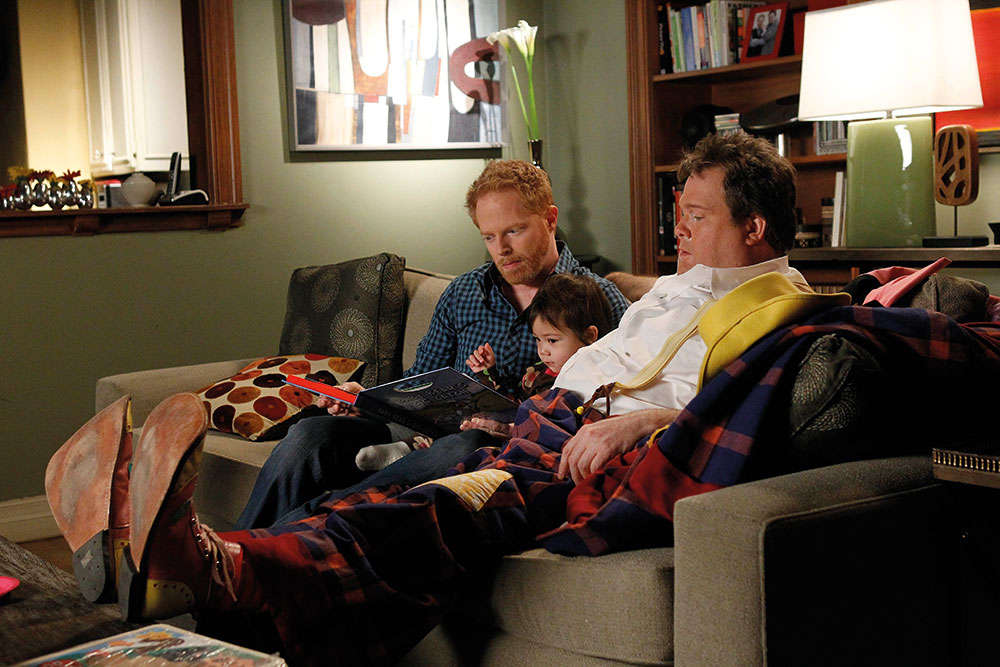 Bradford adds that Grey’s Anatomy and Modern Family (above) have also played an important role. “Modern Family succeeds because of the quality of its characters and storylines, and it just happens that two of the lead characters are gay. A key part of our message is that we want TV to be inclusive of all types of LGBT characters.” In other words, it’s not about populating shows with morally flawless LGBT characters, but reflecting society accurately.
Bradford adds that Grey’s Anatomy and Modern Family (above) have also played an important role. “Modern Family succeeds because of the quality of its characters and storylines, and it just happens that two of the lead characters are gay. A key part of our message is that we want TV to be inclusive of all types of LGBT characters.” In other words, it’s not about populating shows with morally flawless LGBT characters, but reflecting society accurately.
Bradford says that, in general, “TV is doing much better in LGBT portrayal than the film business. What’s pleasing about TV’s efforts is that a lot of the leading players have channels around the world. So a show like I Am Cait on E! is hitting a global audience. We’re going to do some work on this to see what impact that has in both progressive and regressive countries.”
The US is probably the benchmark in terms of taking the LGBT community seriously in scripted content, but GLAAD is also positive about the work done by Hollyoaks in the UK and Neighbours in Australia. Hollyoaks, for example, worked with the Terence Higgins Trust on a storyline involving a gay character with HIV.
“We have wanted to tell this story for a long time and while HIV can affect anyone, infection rates in young gay men remain too high, and to ignore that is to do the gay audience a disservice,” says Bryan Kirkwood, the show’s executive producer. “Hollyoaks is in a unique position to talk directly to millions of young viewers and if the safe-sex message is not coming through education, we can help with that on-screen and through multi-platform support.”
Other LGBT high notes from outside the US include Russell T. Davies’ 2015 trilogy Cucumber, Banana and Tofu, which was made for the BBC and has sold to broadcasters including SVT. Also of note is Vicious, an ITV sitcom starring Ian McKellen and Derek Jacobi that is distributed internationally by Endemol Shine International. With two series and a special, Vicious has been sold to PBS in the US and Network Seven in Australia.
